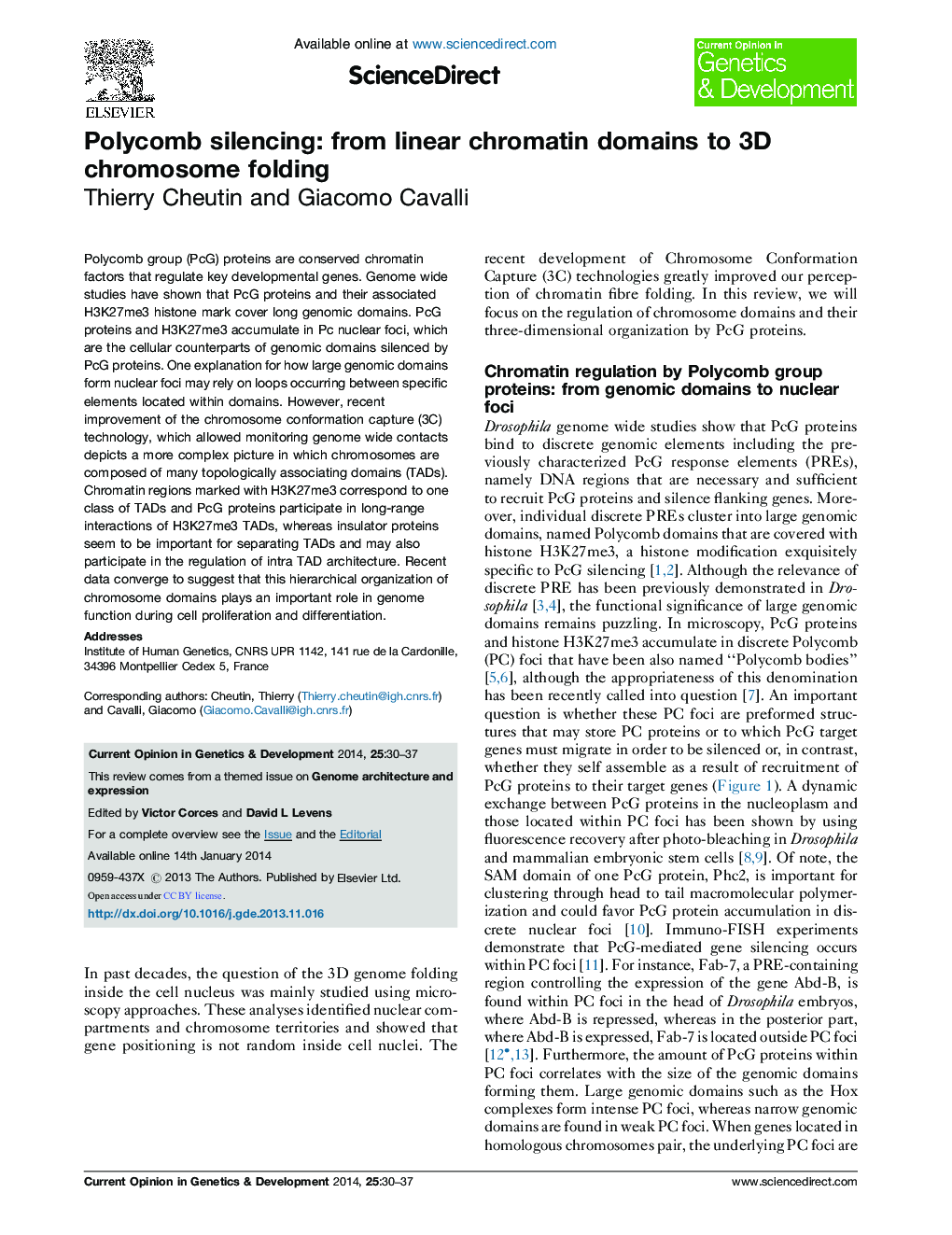| Article ID | Journal | Published Year | Pages | File Type |
|---|---|---|---|---|
| 5893539 | Current Opinion in Genetics & Development | 2014 | 8 Pages |
Polycomb group (PcG) proteins are conserved chromatin factors that regulate key developmental genes. Genome wide studies have shown that PcG proteins and their associated H3K27me3 histone mark cover long genomic domains. PcG proteins and H3K27me3 accumulate in Pc nuclear foci, which are the cellular counterparts of genomic domains silenced by PcG proteins. One explanation for how large genomic domains form nuclear foci may rely on loops occurring between specific elements located within domains. However, recent improvement of the chromosome conformation capture (3C) technology, which allowed monitoring genome wide contacts depicts a more complex picture in which chromosomes are composed of many topologically associating domains (TADs). Chromatin regions marked with H3K27me3 correspond to one class of TADs and PcG proteins participate in long-range interactions of H3K27me3 TADs, whereas insulator proteins seem to be important for separating TADs and may also participate in the regulation of intra TAD architecture. Recent data converge to suggest that this hierarchical organization of chromosome domains plays an important role in genome function during cell proliferation and differentiation.
